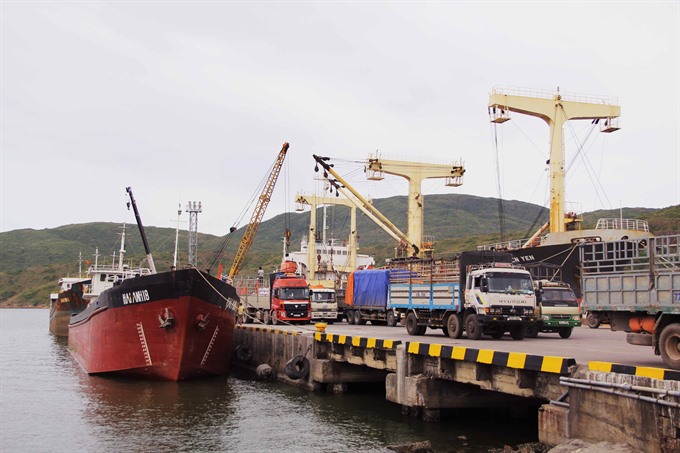 Society
Society

Members of the Central Key Economic Region are seeking for an institutional framework from the government for the cooperation within the region as the members failed to have a common ground for it.
 |
| Quy Nhơn Seaport, part of the Nhơn Hội Economic Zone in Bình Định Province. The province is one among five members of the Central Key Economic Region. VNS Photo Phước Bửu |
THỪA THIÊN- HUẾ — Members of the Central Key Economic Region are seeking an institutional framework from the government to enhance collective cooperation within the region, as they have so far been unable to reach a common ground.
According to the Council for the Central Key Economic Region, which includes the provinces of Thừa Thiên- Huế, Đà Nẵng, Quảng Nam, Quảng Ngãi and Bình Định, the members have worked for 10 years, but no sound progress toward cooperation for mutual benefit has been made.
Economic zones and industrial parks within the central provinces had been more interested in competing with one another so far this year, said Nguyễn Văn Cao, chairman of the council for the period of 2017-2018.
A report by the Việt Nam Institute for Industrial Policy and Strategic Studies said that the economic zones in the five central provinces that make up the Central Key Economic Region have functioned in similar industries, thus competition between them is understandable.
Participants at a workshop held in Thừa Thiên- Huế last Saturday said that in order to resolve this situation, the government must directly intervene.
“The government should allow the region to have some power as an institution, so that it has a better ability to make decisions for itself,” said Dr Trần Đình Thiên, former director of the Việt Nam Institute of Economics, and a member of the Government Economic Advisory Group.
Thiên said the Central Key Economic Region is merely a name as it had no tangible ability to make decisions, adding that while the government formed the key economic region with the intention of increasing cooperation, it has in the meantime licensed economic zones in each locality individually.
“Each locality has an economic zone and they are affected by GDP growth pressure, leading to the need for competition,” he said.
Đàm Minh Lễ, deputy head of the Authority for Dung Quất Economic Zone and Industrial Parks in Quảng Ngãi, said that the Dung Quất Economic Zone in Quảng Ngãi and Chu Lai Economic Zone in Quảng Nam were good examples of the failing cooperation within the region.
At first, Dung Quất and Chu Lai were intended to be one economic zone, but the two couldn’t connect as the bridge connecting them had so far not been available, he said.
Huỳnh Thế Du from Fulbright University Việt Nam said that cooperation between economic zones in the region was impossible, as one must ultimately sacrifice for the sake of the others.
“Cooperation could be obtained if the government invested in better infrastructure and services for all five localities,” he said, adding that the investment would also help to lure investors.
Du said that the region should have a joint stock company gathering all the seaports in the region into one centralised entity, thus ensuring that no locality would be at a disadvantage in a cooperation plan.
Thiên concluded that the potential and industrial infrastructure in each of the five localities of the Central Key Economic Region were not equal. As such, any cooperation pact would mean that one region must sacrifice for the others.
This problem could be solved by further integrating the region, and creating one solid institution to steer regional cooperation, he said. — VNS